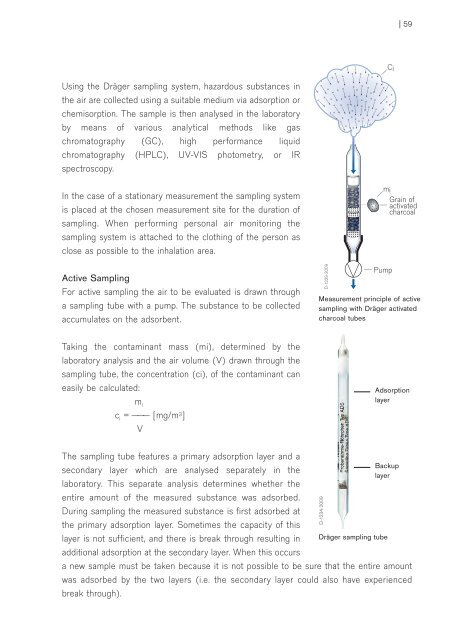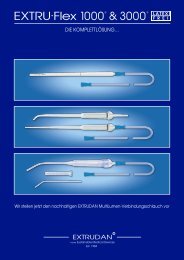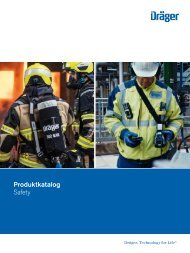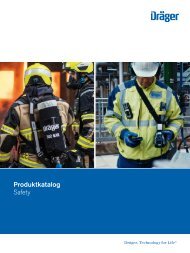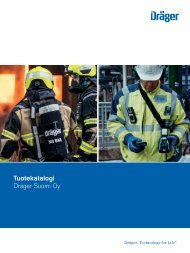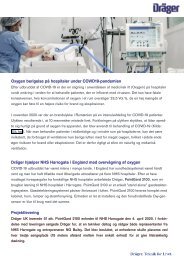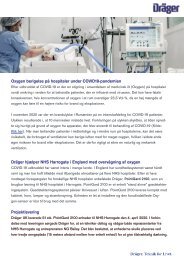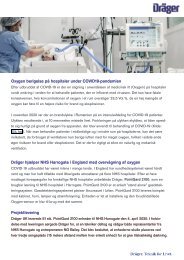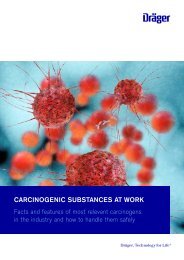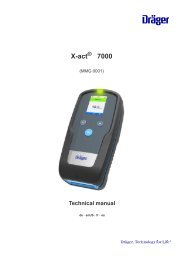Create successful ePaper yourself
Turn your PDF publications into a flip-book with our unique Google optimized e-Paper software.
|59<br />
Ci<br />
Using the Dräger sampling system, hazardous substances in<br />
the air are collected using a suitable medium via adsorption or<br />
chemisorption. The sample is then analysed in the laboratory<br />
by means of various analytical methods like gas<br />
chromatography (GC), high performance liquid<br />
chromatography (HPLC), UV-VIS photometry, or IR<br />
spectroscopy.<br />
In the case of a stationary measurement the sampling system<br />
is placed at the chosen measurement site for the duration of<br />
sampling. When performing personal air monitoring the<br />
sampling system is attached to the clothing of the person as<br />
close as possible to the inhalation area.<br />
Active Sampling<br />
For active sampling the air to be evaluated is drawn through<br />
a sampling tube with a pump. The substance to be collected<br />
accumulates on the adsorbent.<br />
D-1229-2009<br />
Pump<br />
mi<br />
Grain of<br />
activated<br />
charcoal<br />
Measurement principle of active<br />
sampling with Dräger activated<br />
charcoal tubes<br />
Taking the contaminant mass (mi), determined by the<br />
laboratory analysis and the air volume (V) drawn through the<br />
sampling tube, the concentration (ci), of the contaminant can<br />
easily be calculated:<br />
m i<br />
c i = ——— [mg/m 3 ]<br />
V<br />
Adsorption<br />
layer<br />
The sampling tube features a primary adsorption layer and a<br />
secondary layer which are analysed separately in the<br />
laboratory. This separate analysis determines whether the<br />
entire amount of the measured substance was adsorbed.<br />
During sampling the measured substance is first adsorbed at<br />
the primary adsorption layer. Sometimes the capacity of this<br />
layer is not sufficient, and there is break through resulting in<br />
additional adsorption at the secondary layer. When this occurs<br />
Backup<br />
layer<br />
Dräger sampling tube<br />
a new sample must be taken because it is not possible to be sure that the entire amount<br />
was adsorbed by the two layers (i.e. the secondary layer could also have experienced<br />
break through).<br />
D-1234-2009


